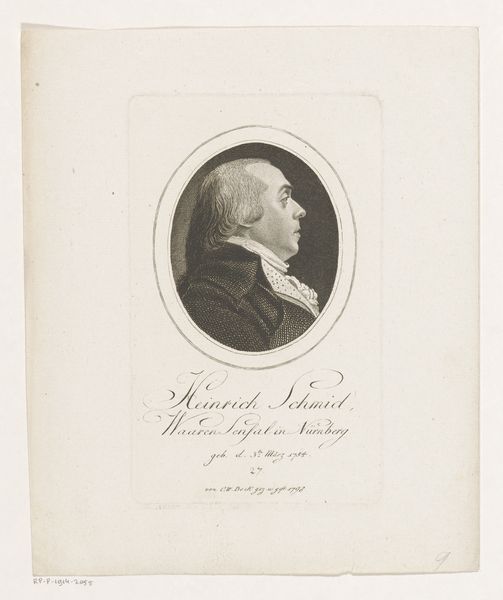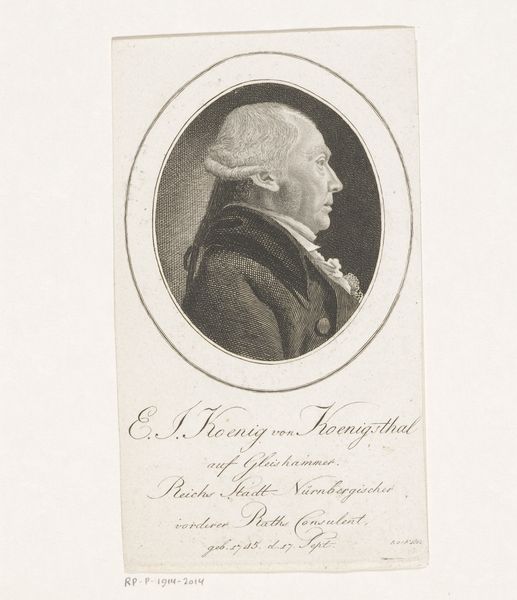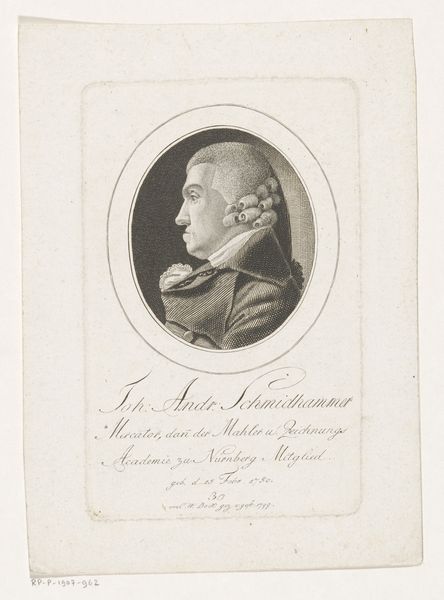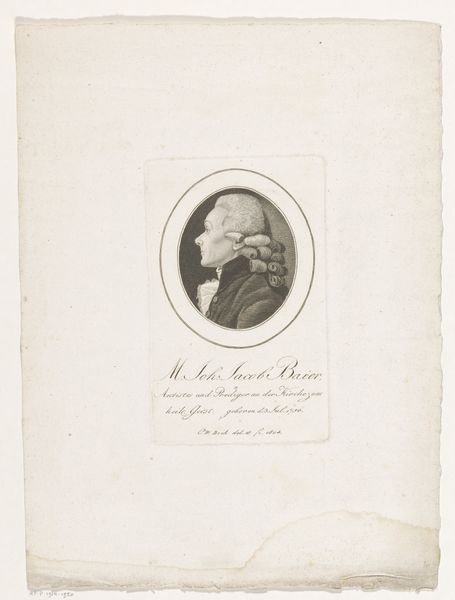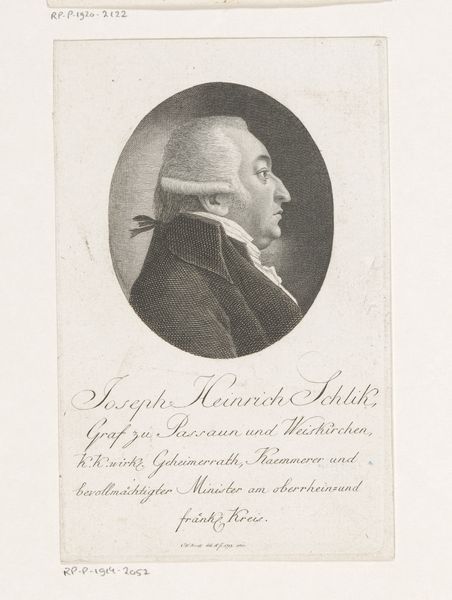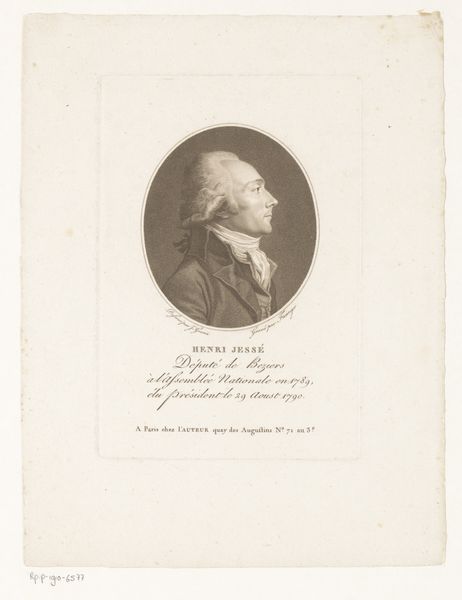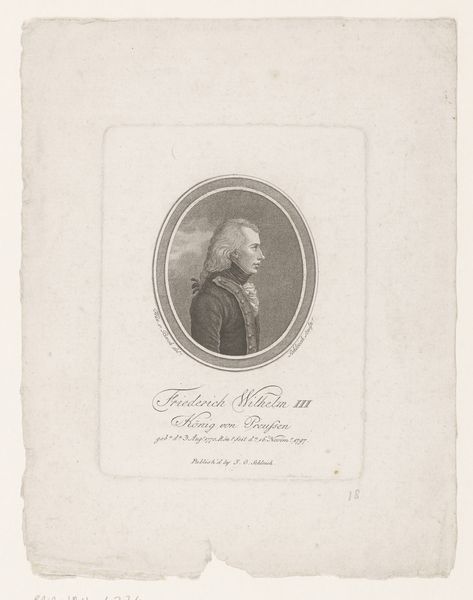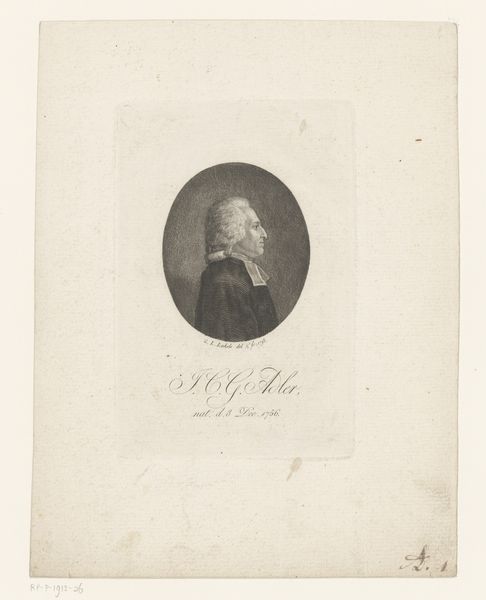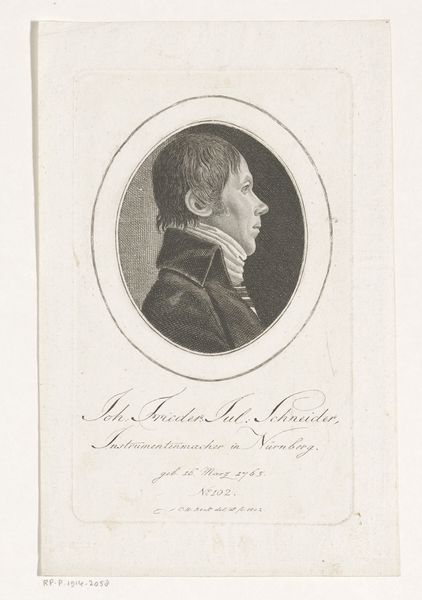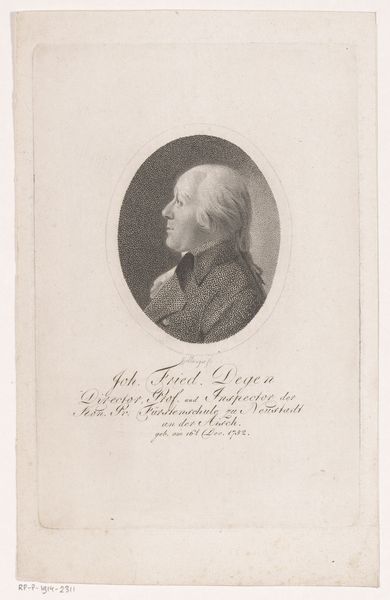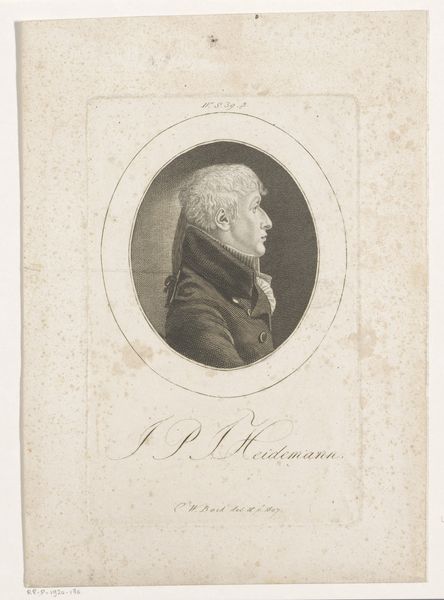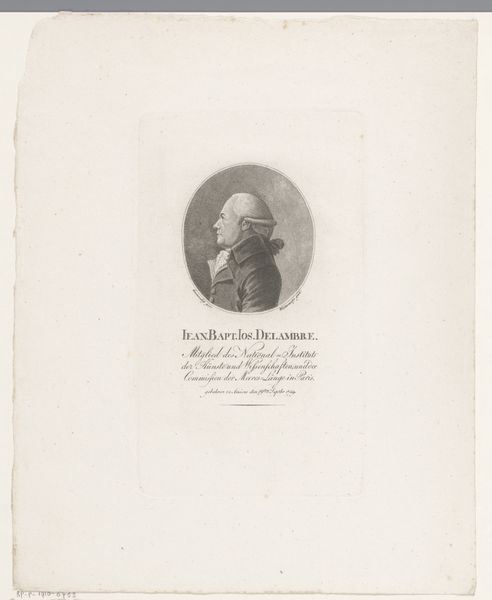
drawing, paper, ink
#
portrait
#
pencil drawn
#
drawing
#
neoclacissism
#
light pencil work
#
pencil sketch
#
old engraving style
#
paper
#
ink
#
pencil drawing
#
pencil work
#
academic-art
#
realism
Dimensions: height 153 mm, width 93 mm
Copyright: Rijks Museum: Open Domain
Christoph-Wilhelm Bock etched this portrait of Andreas Weiß, a city court deputy from Nuremberg, sometime around 1802. The profile is framed by a simple oval, a shape that recurs throughout history, suggesting wholeness and containment, evoking a sense of completion. This brings to mind ancient cameos and Roman portrait busts, each seeking to capture and preserve the essence of an individual. The oval frames, much like the laurel wreaths of antiquity, symbolically crown the subject, elevating him, seeking permanence. Yet, paradoxically, it also imprisons him. Think of Botticelli's figures emerging from their painted frames, or the faces peering out of Byzantine icons—this desire to capture the soul within a defined space has always fascinated us. These faces, captured in ovals across time, speak to our collective memory, whispering tales of identity, history, and the eternal quest for recognition. A portrait in a circle, a symbol of continuous return, as humanity constantly circles back to its past in search of its present.
Comments
No comments
Be the first to comment and join the conversation on the ultimate creative platform.
